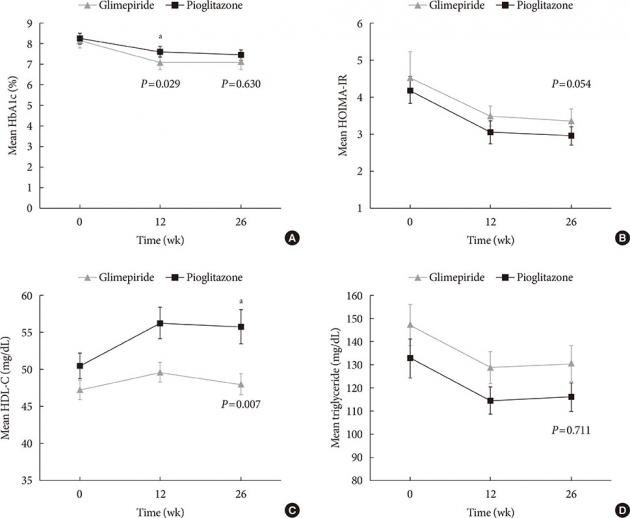For type 2 diabetes patients in Korea, thiazolidinedione (TZD) could provide an excellent choice as the third-line compound drug added to the combination therapy of metformin and alogliptin, researchers have recently concluded.
A research team, led by Professors Kim Jeong-mi and Kim Sang-soo at Pusan National University Hospital, conducted the study by assessing the efficacy and safety of pioglitazone or glimepiride when added to metformin plus alogliptin treatment for type 2 diabetes mellitus (T2DM).
To provide a more accurate treatment option at a time when there is limited information regarding the optimal third-line therapy for managing T2DM, they assessed the efficacy and safety of pioglitazone or glimepiride as a third-line drug in Korea’s uncontrolled T2DM patients despite their combined use of metformin and alogliptin.
The multicenter, randomized, active-controlled trial recruited 135 Korean patients with T2DM, who had failed to control their symptoms adequately by using metformin plus alogliptin.
Afterward, the team randomized the patients to also receive either pioglitazone (15 mg/day) or glimepiride (2 mg/day) for 26 weeks, with dose titration permitted based on the investigator's judgment.

As a result, while the glycosylated hemoglobin levels exhibited similar significant decreases in both groups during the treatment period, the pioglitazone-treated group showed significantly higher high-density lipoprotein cholesterol levels. It also substantially lowered the homeostatic model assessment of insulin resistance values when compared with the glimepiride-treated group.
Besides, adding glimepiride to metformin plus alogliptin markedly increased the risk of hypoglycemia compared to the pioglitazone-treated group.
"Among T2DM patients with inadequately controlled symptoms after using metformin plus alogliptin, the addition of pioglitazone provided comparable glycemic control and various benefits, such as improvements in lipid profiles, insulin resistance, and hypoglycemia risk, relative to the addition of glimepiride," the team said.
Therefore, TZD might be the right choice as third-line therapy in addition to metformin and DPP-4-inhibitor in Korean patients with T2DM, the team added.
The results of the research were published in the Diabetes & Metabolism Journal, under the title "Efficacy and Safety of Pioglitazone versus Glimepiride after Metformin and Alogliptin Combination Therapy: A Randomized, Open-Label, Multicenter, Parallel-Controlled Study."

